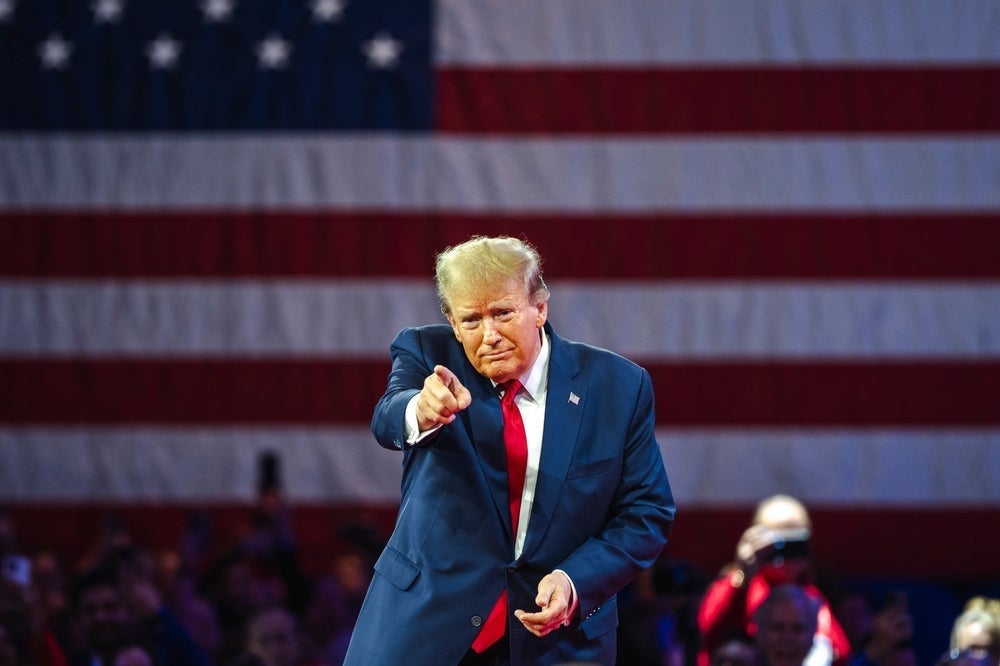
For the first time since the 2008 financial crisis, the US Federal Reserve has cut interest rates.
The Federal Reserve, the United States’ central banking system, announced yesterday that it had lowered the federal funds rate by 0.25% to 2 to 2.25%.
In a statement, the Federal Reserve said this was intended to encourage “maximum employment and price stability” in light of “global developments for the economic outlook” and “muted inflation pressures”. In light of global events such as the ongoing US-China trade war, and the UK’s imminent exit from the European Union, cutting interest rates is designed to ensure the US economy remains stable.
Lowering interest rates is designed to encourage growth during times of economic slowdown as they make borrowing cheaper and therefore makes it easier for businesses to make investments and purchases. However, President Donald Trump took to Twitter to criticise the move and call for more drastic cuts and an “aggressive rate-cutting cycle which would keep pace with China”.
But what, if anything, does this mean for technology companies?
“A rate cut will act as a buffer”
In response to the announcement, deVere Group’s International Investment Strategist Tom Elliott believes that although expected, the cuts have divide the markets’ opinion:
How well do you really know your competitors?
Access the most comprehensive Company Profiles on the market, powered by GlobalData. Save hours of research. Gain competitive edge.

Thank you!
Your download email will arrive shortly
Not ready to buy yet? Download a free sample
We are confident about the unique quality of our Company Profiles. However, we want you to make the most beneficial decision for your business, so we offer a free sample that you can download by submitting the below form
By GlobalData“US stocks have taken heart from a recent upturn in domestic economic data and from the prospect of the Fed and other central banks easing monetary policy over the coming months. This, it is argued, will help the current cycle of US and global economic growth. However, the US Treasury market, is indicating that a recession is around the corner. The inverted Treasury yield curve is cited as ‘exhibit number one’ for this thesis.
“Today’s decision by the Fed to cut rates suggests that while the policymakers believe the economy is looking in good shape, there are also some growth headwinds on the horizon and inflation is low, so a rate cut will act as a buffer.
He believes that the cuts could be beneficial for other currencies:
“Where does this leave for US and international investors? Investors can incorporate both opinions into a portfolio by owning growth-sensitive stocks and misery-loving government bonds. This multi-asset approach is standard amongst long-term investors. Specifically, the rate cut will put further downward pressure on the US dollar, with the Yen, Swiss franc and Euro likely to rise against the greenback.
“Emerging stock markets should gain the most from lower Fed rates and a weaker dollar, since the massive US dollar debt many emerging market companies took on in the early years of this decade becomes cheaper to service and repay in local currency terms. US exporters should also benefit, plus the battered British Pound may get some near-term relief from a Fed rate cut, particularly as the Bank of England seems unlikely to be cutting its own benchmark rates any time soon.”
“US and global investors now need to revise their portfolios to ensure that they are best-positioned to take advantage of opportunities and mitigate the risks as we enter what is likely to be a new era of rate cutting for the Federal Reserve.”
What does this mean for the technology industry?
When interest rates are lower, consumers have more money to spend, which can boost spending throughout the economy, positively impacting consumer technology and freeing up money for businesses to spend on expanding. More favourable borrowing rates could also prove beneficial to the industry, particularly for startups.
However, initially the Dow and S&P 500 experienced their largest daily percentage drop in the past three months after the announcement was made, with technology, healthcare and consumer-oriented companies accounting for much of this according to USA Today.
The Nasdaq index also dropped, with Amazon and Microsoft both experiencing an initial drop in share prices. This could indicate a reaction to the implications of the decision to cut interest rates, which typically takes place during recessions. Given the context of the US-China trade war, this has particularly affected tech stocks due to the industry’s close links with Asian manufacturing.
CNBC also called the tech sector “one sector to avoid after a Fed rate reduction if history is any guide”, suggesting that the drop experienced by tech stocks was not unexpected.
Senior market analyst at City Index Fiona Cincotta said:
“Fed Chairman Powell’s policy decision was essentially defensive, and his comments a balancing act that confused Wall Street. US markets, perhaps hoping for a 50bps cut, were not impressed. All were down, led by the S&P 500 and the Nasdaq 100, which fell -01.09% and -1.30% respectively.”
However, the Dow Jones Industrial Average has since increased again, with tech stocks such as Microsoft, IBM, Cisco and Apple all rising.
Many have argued that a drop of just 0.25% is unlikely to have a lasting impact for consumers or investors, as interest rates are already low, so the ongoing effects remain to be seen.
Read more: US-China trade war: What goods will be affected by Trump’s latest trade tariffs?







